The standards for higher education institutions, issued by the Ministry of Education and Training, stipulate that lecturers must meet requirements regarding quantity, qualifications, and available time to ensure the quality of teaching and research.
Specifically, criterion 2.1 of the faculty standards requires that the ratio of students (converted according to qualification level, field, and training format) to full-time faculty members in schools must not exceed 40.

According to the standards for higher education institutions, the ratio of students (converted according to qualification level, field, and training format) to full-time lecturers should not exceed 40%.
PHOTO: MY QUYEN
This article compiles statistics on higher education institutions with a total training scale (including undergraduate, master's, and doctoral levels) of 10,000 or more students, based on the annual public disclosures of these institutions for the 2024-2025 academic year as of October 30th.
The statistics may be incomplete because some schools have not updated their information, or the updates are incomplete, or the file/link is not searchable.
Which institution offers the most postgraduate programs?
Statistics show that the top 5 higher education institutions with the largest total training scale are: Van Lang University (55,702), Can Tho University (48,833), Hanoi University of Science and Technology (46,957), Ho Chi Minh City University of Industry (40,580), and Ho Chi Minh City Open University (39,512). These are also the 5 universities with the largest total student population in that order.
However, in terms of postgraduate training scale, the University of Economics Ho Chi Minh City ranks first with 5,549 master's and doctoral students, although its total training scale ranks only 6th (39,400). Can Tho University ranks second with 3,054 master's and doctoral students, and Hanoi Pedagogical University ranks third with 2,975 students.
Some higher education institutions have a lower total training scale (around 15,000) but have a postgraduate scale of over 1,000, including the Banking Academy (1,721), Hong Bang International University (1,081), Ho Chi Minh City University of Law (1,053), and the University of Social Sciences and Humanities - Vietnam National University, Hanoi (1,193).
In some schools, one lecturer is responsible for over 40 students.
According to the formula provided by the Ministry of Education and Training, the student-to-lecturer ratio is equal to the total number of students converted according to their level, field, and form of training (N) divided by the total number of full-time lecturers.
The formula for calculating N is based on the total training scale (regular university, part-time, distance learning; postgraduate students; doctoral students) and the teaching load factor of the training field.
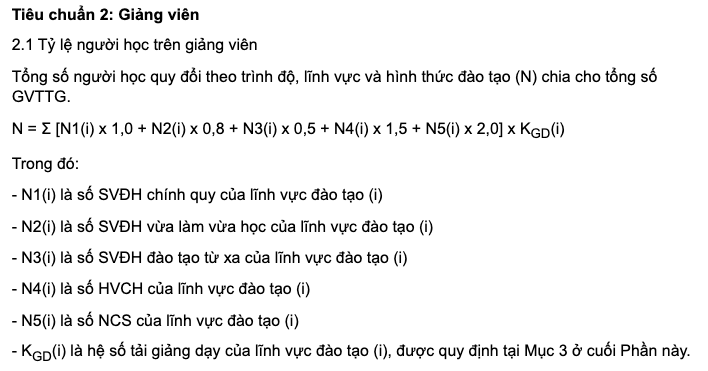
Formula for calculating the student-to-faculty ratio
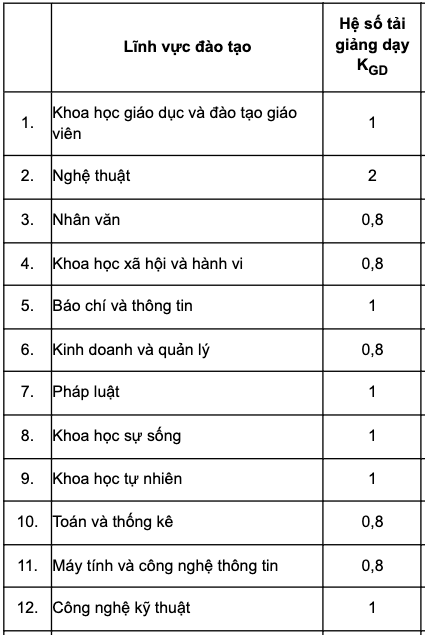
The teaching coefficient of the training field is used to calculate the total number of learners converted according to level, field and form of training (N), from which the learner/lecturer ratio is calculated.
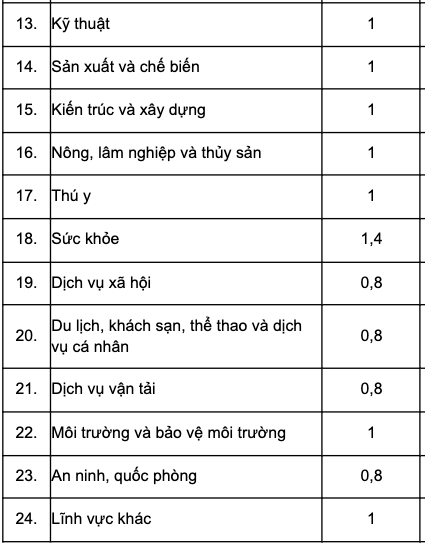
The teaching coefficient of the training field is used to calculate the total number of learners converted according to level, field and form of training (N), from which the learner/lecturer ratio is calculated.
The data shows that most schools meet the Ministry of Education and Training's requirement of a student-to-lecturer ratio of no more than 40 students per lecturer.
However, there are still some universities where one lecturer "handles" more than 40 students, such as Dong Thap University (45.22), Electric Power University (43.8), Ho Chi Minh City University of Technology and Education (43.45), University of Finance - Marketing (42.22), and the Academy of Finance (41.88).
Meanwhile, Hanoi University has the highest excess standard with a ratio of 15.3 students/lecturers. Next is Da Nang University of Technology 1 (7.6), Dong A University (17.7), Water Resources University (18.3), Hanoi University of Civil Engineering (19), University of Economics - Da Nang University (22.36)...
The specific details are as follows:
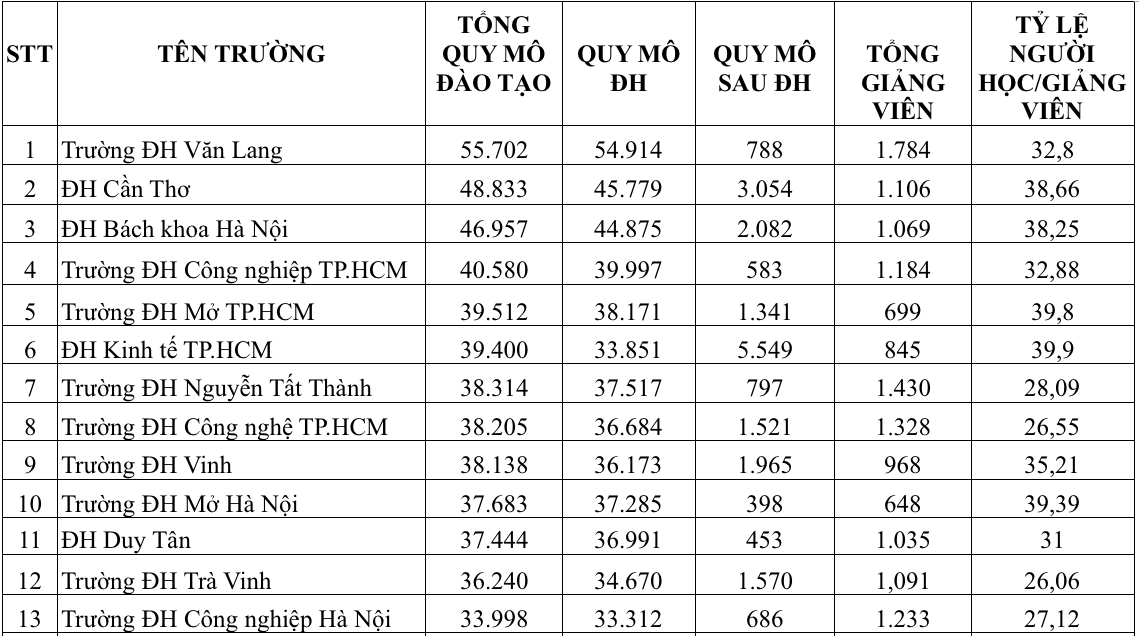

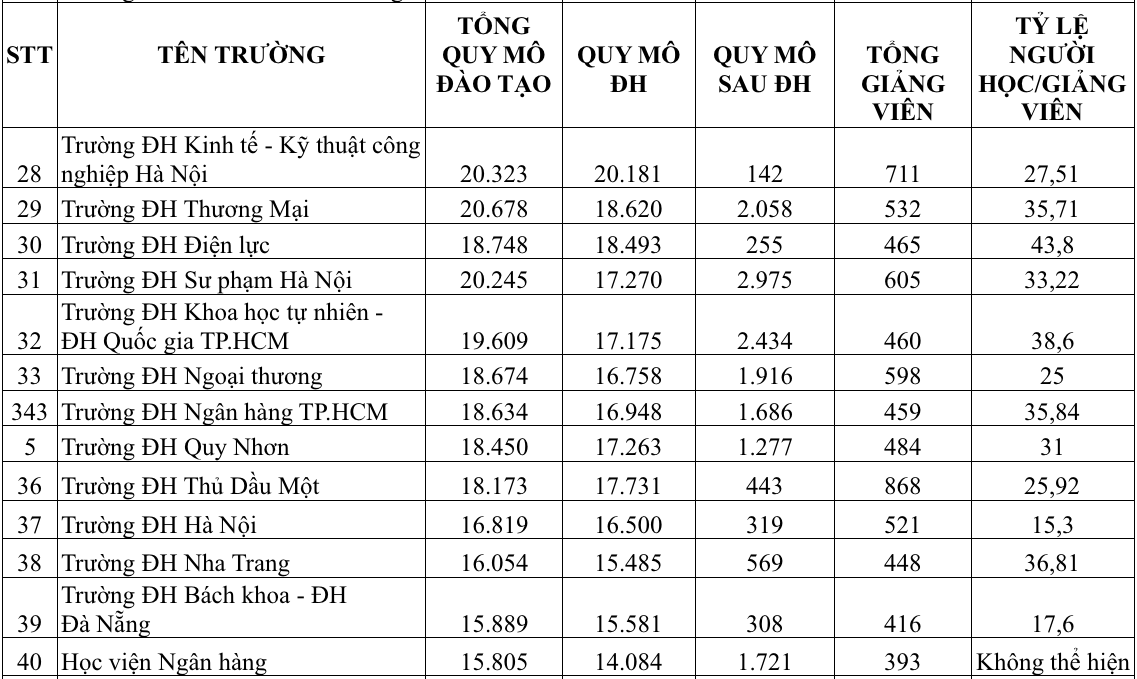
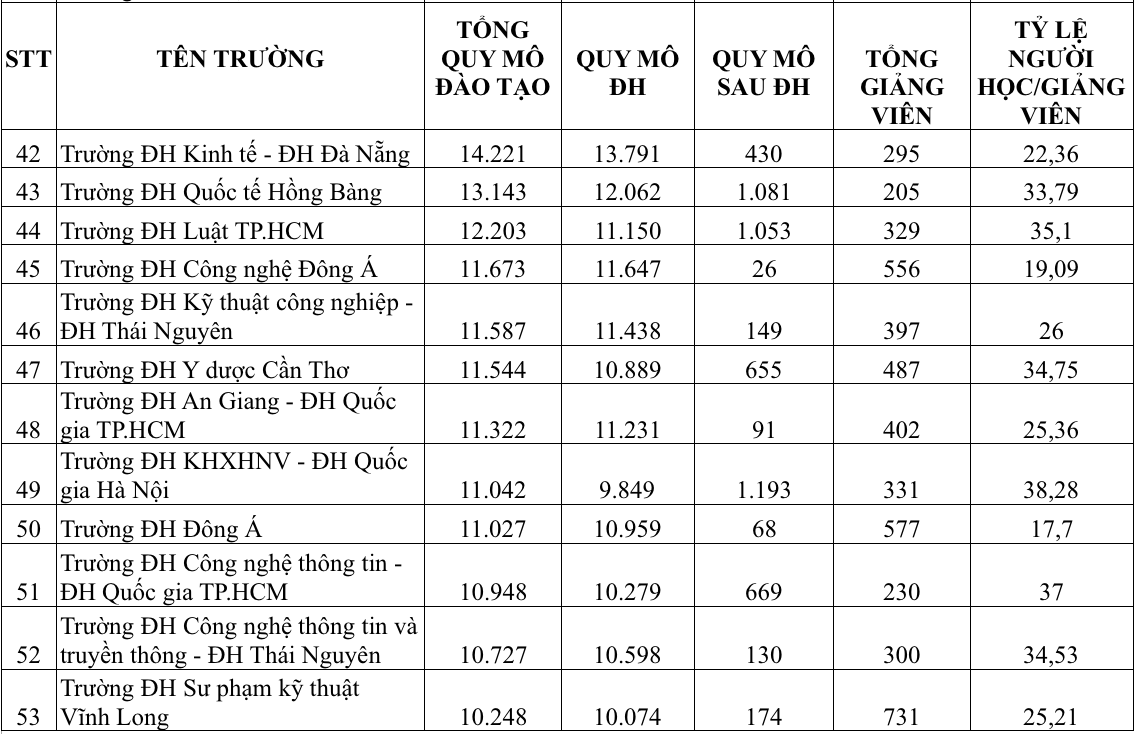
Source: https://thanhnien.vn/mot-giang-vien-dang-ganh-bao-nhieu-nguoi-hoc-185251030114546218.htm





![[Photo] Two flights successfully landed and took off at Long Thanh Airport.](/_next/image?url=https%3A%2F%2Fvphoto.vietnam.vn%2Fthumb%2F1200x675%2Fvietnam%2Fresource%2FIMAGE%2F2025%2F12%2F15%2F1765808718882_ndo_br_img-8897-resize-5807-jpg.webp&w=3840&q=75)








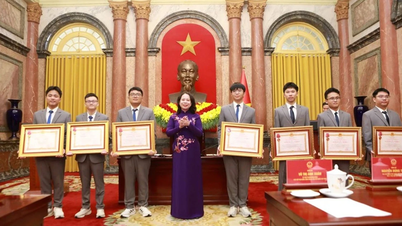






























































































Comment (0)